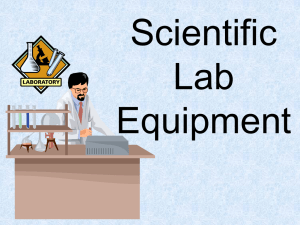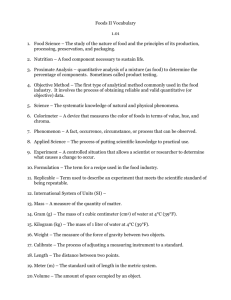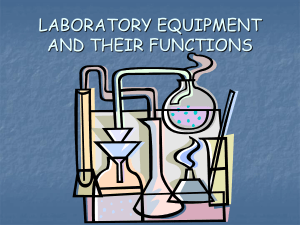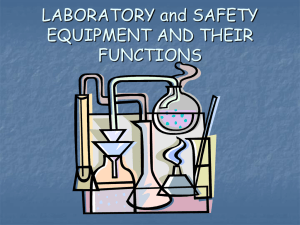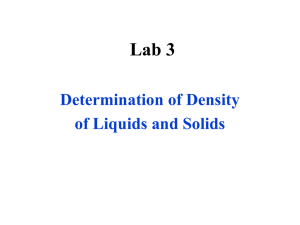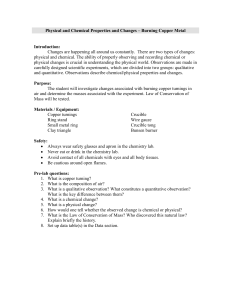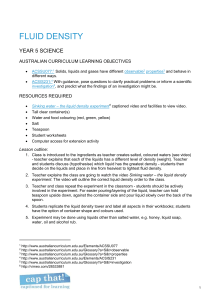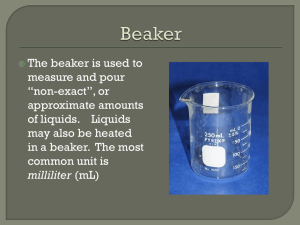Science equipment and meaning again - kateh
advertisement
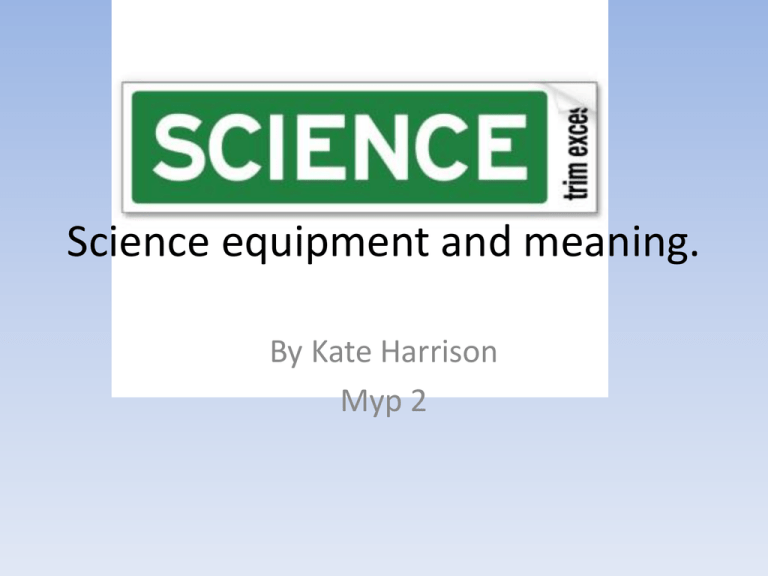
Science equipment and meaning. By Kate Harrison Myp 2 Beaker • Beaker: a liquid-measuring container. • It helps us measure different liquids. We do it by pouring liquid into the container and looking at what it measures by looking at the numbers. burette • Measures volume of solution • A uniform-bore glass tube with fine gradations and a stopcock at the bottom, used especially in laboratory procedures for accurate fluid dispensing and measurement. The burette is commonly used in titrations to measure precisely how much liquid is used. Clay triangle • A wire frame with porcelain. • A clay triangle, physically, is three sets of two wires with the ends twisted to form a triangle. • The clay triangle is used to hold a crucible while the crucible is heated. Wire gauze • Used to spread heat of a burner flame. Wire gauze can be used to support a container (such as a beaker or flask) during heating. When the bunsen burner flame is beneath it, with a tripod, the wire gauze helps to spread the flame (and heat) out evenly over the container. Test tube • Used as holder of small amount of solution. • The definition of a test tube is “clear, cylindrical glass tube usually open at one end and rounded at the other, used in laboratory experimentation." Forceps • Holds or picks up small objects Graduated pipette • Measures solution volumes. Graduated cylinder • Measures approximate volume if liquids. • Graduated cylinders are specifically designed to make accurate liquid volume measurements. The volume is read from the lowest portion of the meniscus of the liquid Crucible • Used to heat a small amount of a solid substance at a very high temperature. • A crucible is a container of a strong material capable of withstanding very high temperatures. Funnel • Used to transfer solids and liquids without spilling. Thermometer • The main function of a thermometer is to Measure temperature. condenser • Used in distillation. • Its function is to Condense substances in gas form back into liquid balance • Measures mass of materials. • You place the object on the weight on the left side and move the three weights. When they arrow on the right side is on 0 then you add up the number on the weights and that is the total mass of your object. pH meter • A pH meter Measures acidity of solutions. Centrifuge • Separates materials of varying density. Pipette • Used to transfer measured substances of varying density. • Gives drop by drop. • Varies in designs. Droppers • For addition of liquids, drop by drop. • It’s a device that can measure out one drop of water somewhat accurately. Glass funnels • For funnelling liquids from one container to another, or for filtering when equipped with filter paper. Graduated cylinders • For measurement of an amount of liquid. The volume of liquid can be estimated to the nearest 0.1 mL with practice. • How it works.. Picture.. Ring stand (with rings or clamps) • For holding pieces of glassware in place. • Its function is for supporting laboratory apparatus. Test tubes • For holding small samples or for containing small-scale reactions. Test-tube holders • For holding test tubes when tubes should not be touched. Tongs • Similar function to forceps, but are use full for larger items. • To move things/objects about. Volumetric flasks • To measure precise volumes of liquid or to make precise dilutions. • Wash bottles • For dispensing small quantities of distilled water. Watch glasses • For holding small samples or for covering beakers or evaporating dishes. Wire gauze on a ring. • Supports beakers to be heated by bunsen burner. THANK YOU FOR WATCHING By Kate Harrison Myp 2
